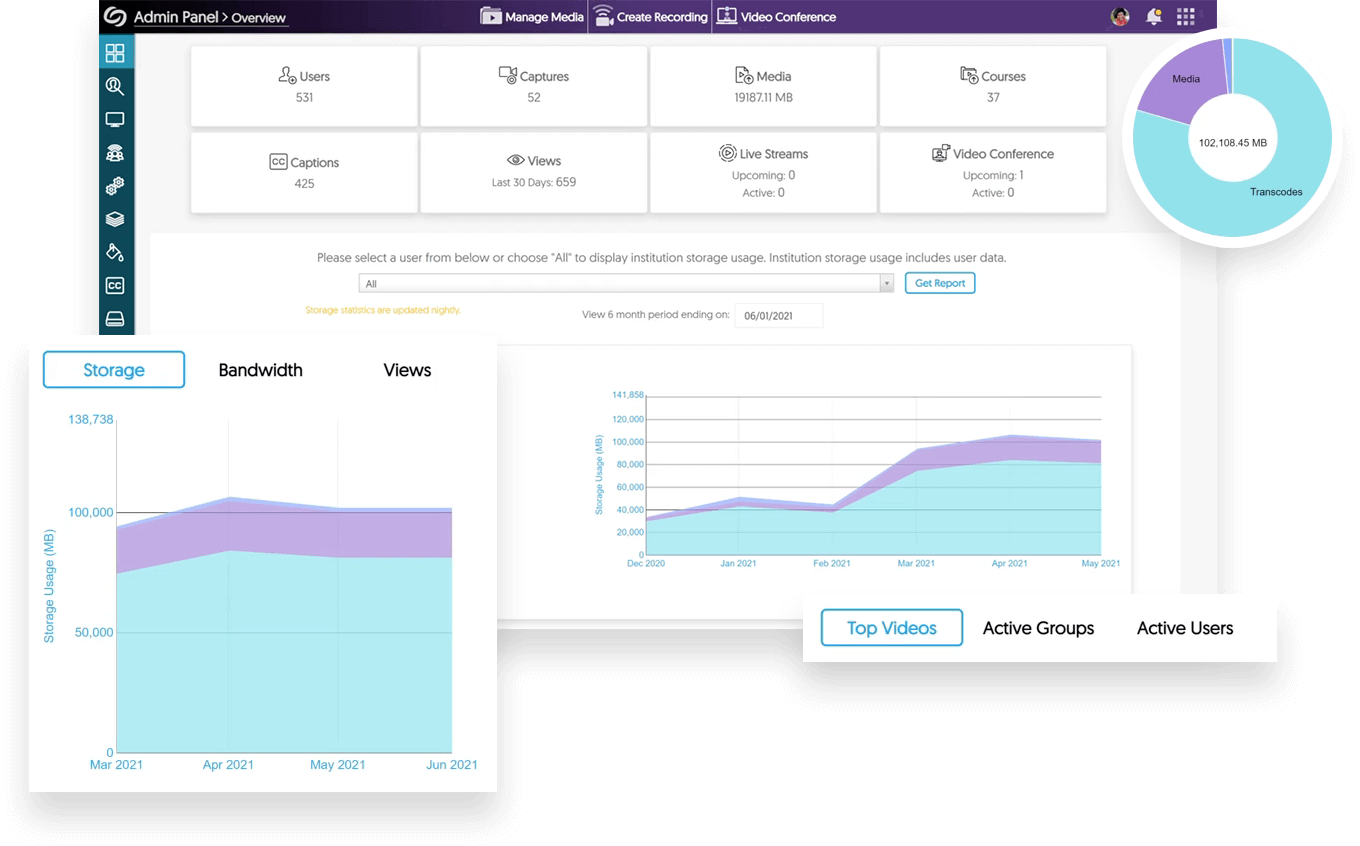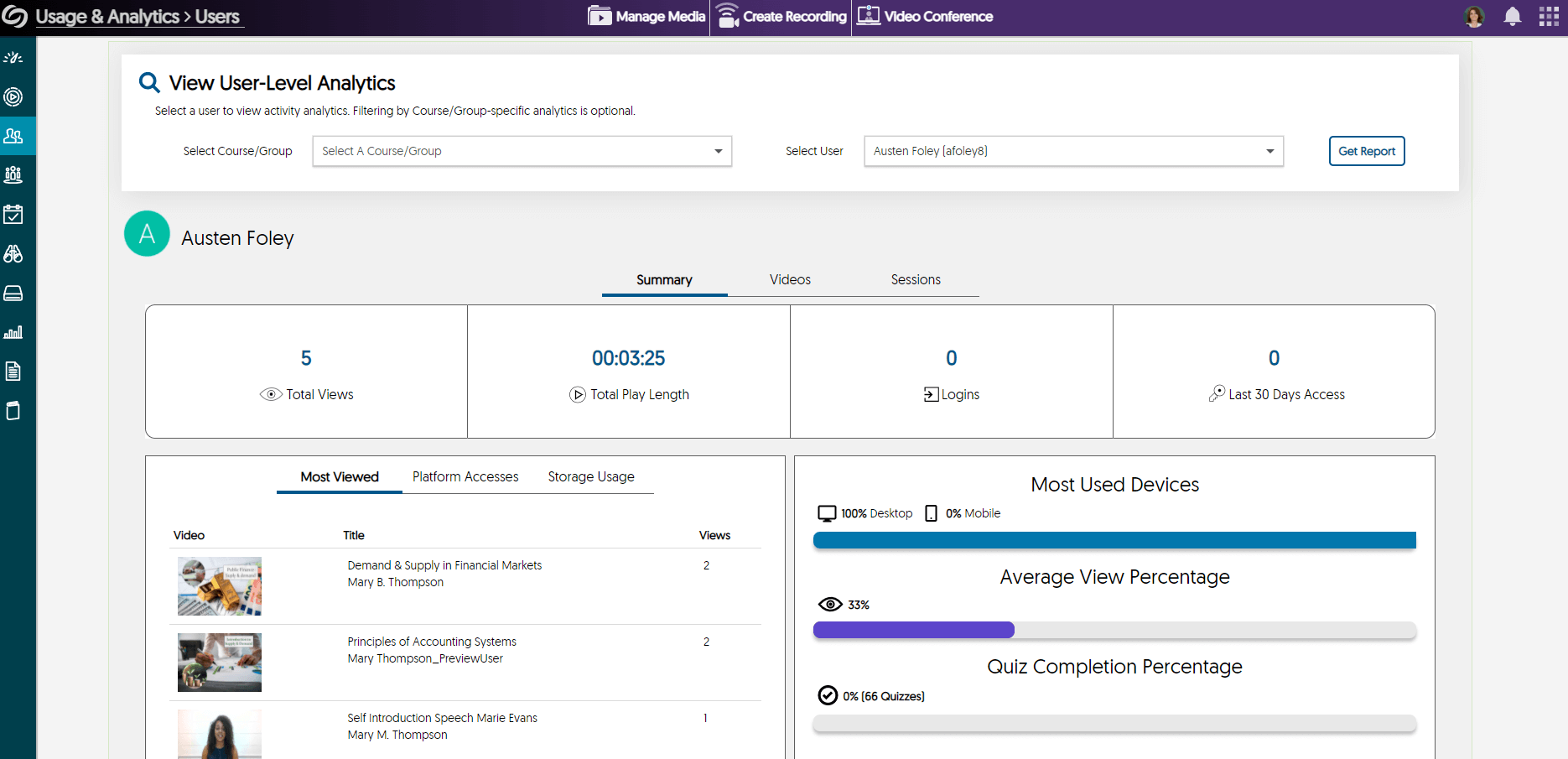In addition to engagement and other statistics, comprehensive media management analytics provide a range of information about storage, bandwidth, video views and use, classes, discussions, and more. While basic video services may provide information about the number of views, an analytics suite provides a range of information to maximize the effectiveness of media content.
Administrative Use of Video Analytics
 Administrators can access all video analytics, across all institutional content. These analytics provide a range of broad insights across the institution about how content creators are creating media content and how they are using media management tools. In addition, analytics make it clear how individual users are using created and stored media content.
Administrators can access all video analytics, across all institutional content. These analytics provide a range of broad insights across the institution about how content creators are creating media content and how they are using media management tools. In addition, analytics make it clear how individual users are using created and stored media content.
Administrators can use analytics to analyze and understand different aspects of the media management suite, as well as how use has changed over time. Analytics provide administrators with the ability to review and consider video quality, patterns of use, and to assess the success of media creation programs across the institution.
For Administrators, analytics provide:
- Information on media and bandwidth use, and how it has changed over time: This is an effective way to see and track results from programs to increase video engagement or media use.
- The ability to assess individual instructor’s use of media: This helps demonstrate the effectiveness of course or media on a class-by-class basis.
- The tools required to better understand and improve upon media use: A meaningful dashboard provides insights for media use both for students and instructors.
Creator Use of Video Analytics
 Both administrators and creators- whether instructors or course designers- can make use of video analytics. Video and media creators have the ability to see their own analytics, including which videos are most watched, and how users are watching individual videos, through a breakdown of student interest.
Both administrators and creators- whether instructors or course designers- can make use of video analytics. Video and media creators have the ability to see their own analytics, including which videos are most watched, and how users are watching individual videos, through a breakdown of student interest.
In an educational setting, instructors can use analytics to look carefully at how students are engaging in their classes, including the use of discussions, polls and quizzes, and attendance in video conferencing.
For instructors, analytics enable:
- The ability to assess student understanding of video content. Instructors can look at video hotspots to see where students may have had additional questions or concerns, as well as drop-off points, engagement and popular content..
- Easy access to reports. Instructors can enable on-demand and automated data exportation with reports that cover system statistics, usage and instructional insights.
- A practical way to look at and review student participation. Instructors can track student progress at the course level, including number of videos watched, total play length, number of quizzes completed and number of comments posted.
YuJa’s Usage and Analytics
YuJa’s Usage and Analytics Suite provides the following tools to administrators, enabling access to detailed information about media creation and use:
- A general overview of analytics.
- Institution analytics, including visitors, devices and classes.
- Storage usage, by amount of usage and number of objects, as well as on a class-by-class basis.
- Bandwidth, by institution or class.
- Users, including information about top videos, active and inactive students by class or institution.
- Insights on a video-by-video basis.
- Attendance by class and live stream.
- Content, by institution or by class, providing information about video views.
- Groups, with information about discussion, polls and quizzes.
- Downloadable reports with information about storage, bandwidth, visitors and video views.









